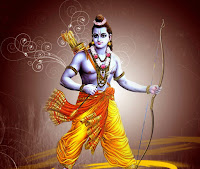Vatsanabha Varga is a chapter in the classical Ayurvedic text Vaidyaka Nighantu that deals with the classification and usage of various plants and herbs that contain the poisonous substance aconite. While aconite is highly toxic and dangerous if not used properly, when used in small, controlled doses it can have therapeutic benefits for certain health conditions. Here are some of the plants covered in the Vatsanabha Varga:
Vatsanabha (Aconitum ferox) - This is the most important plant covered in this chapter. It is a highly toxic plant that contains high levels of aconite alkaloids, but when used in small, controlled doses it can have analgesic, sedative, and anti-inflammatory properties.
Suryavarta (Tylophora asthmatica) - This plant is also known as Indian ipecac and contains small amounts of aconite alkaloids. It is used in Ayurvedic medicine to treat respiratory conditions such as asthma and bronchitis.
Kritamala (Swertia chirata) - This bitter-tasting plant is used in Ayurvedic medicine to treat fever, digestive disorders, and liver diseases. It contains small amounts of aconite alkaloids.
Visha (Aconitum heterophyllum) - Also known as atis or Indian aconite, this plant contains high levels of aconite alkaloids and is highly toxic. It is used in Ayurvedic medicine to treat fever, digestive disorders, and nervous system disorders, but must be used with extreme caution.
Yavani (Trachyspermum ammi) - Also known as ajwain or carom seeds, this plant is commonly used as a spice in Indian cuisine. It contains small amounts of aconite alkaloids and is used in Ayurvedic medicine to treat digestive disorders.
Vachaa (Acorus calamus) - Also known as sweet flag, this plant contains small amounts of aconite alkaloids and is used in Ayurvedic medicine to treat respiratory and nervous system disorders.
These are just a few of the plants covered in the Vatsanabha Varga. As mentioned earlier, aconite-containing plants must be used with extreme caution and under the guidance of a qualified Ayurvedic practitioner.
Dhattura (Datura metel) - This plant contains various alkaloids including atropine, scopolamine, and hyoscyamine, and is highly toxic. It is used in Ayurvedic medicine in very small doses to treat fever, pain, and respiratory conditions.
Kusha (Desmostachya bipinnata) - Also known as durva grass, this plant is used in Ayurvedic medicine to treat a variety of conditions including fever, diarrhea, and respiratory disorders. It contains small amounts of aconite alkaloids.
Hingu (Ferula asafoetida) - Also known as asafetida, this plant is commonly used as a spice in Indian cuisine. It is used in Ayurvedic medicine to treat digestive disorders, nervous system disorders, and respiratory conditions. It contains small amounts of aconite alkaloids.
Kiratatikta (Swertia chirayita) - This bitter-tasting plant is used in Ayurvedic medicine to treat fever, digestive disorders, and liver diseases. It contains small amounts of aconite alkaloids.
Shringavera (Zingiber zerumbet) - Also known as pinecone ginger, this plant is used in Ayurvedic medicine to treat digestive disorders, respiratory conditions, and fever. It contains small amounts of aconite alkaloids.
Vriddhadaruka (Argyreia speciosa) - This plant is used in Ayurvedic medicine to treat nervous system disorders, fever, and pain. It contains small amounts of aconite alkaloids.
Again, it's important to note that the plants mentioned in the Vatsanabha Varga chapter of Vaidyaka Nighantu contain toxic compounds and must be used with caution and under the guidance of a qualified Ayurvedic practitioner.












